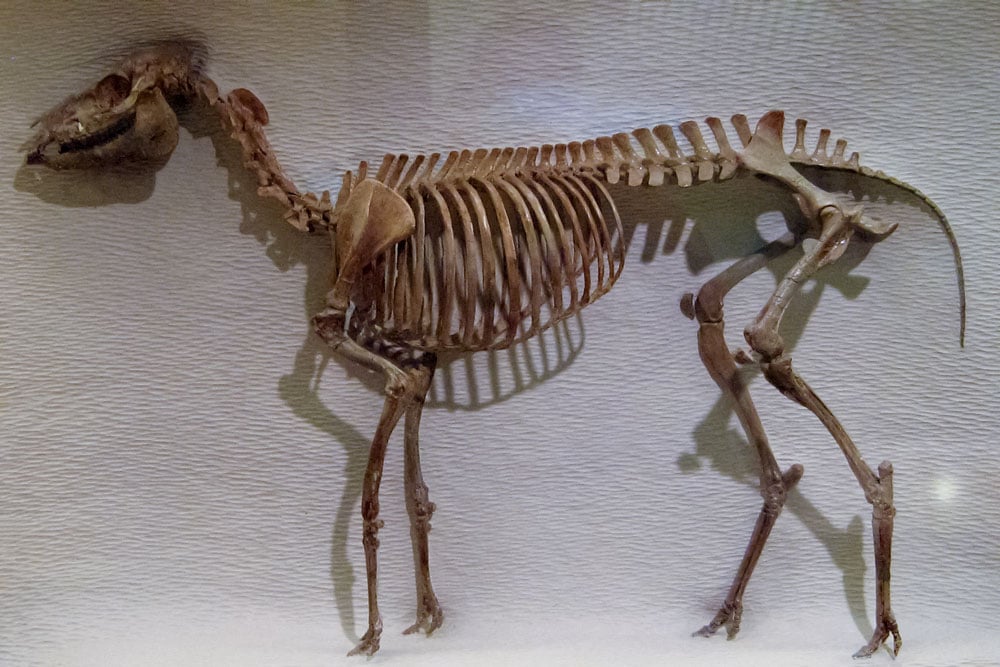Meet the Mammals | Stops | Prehistoric Road Trip
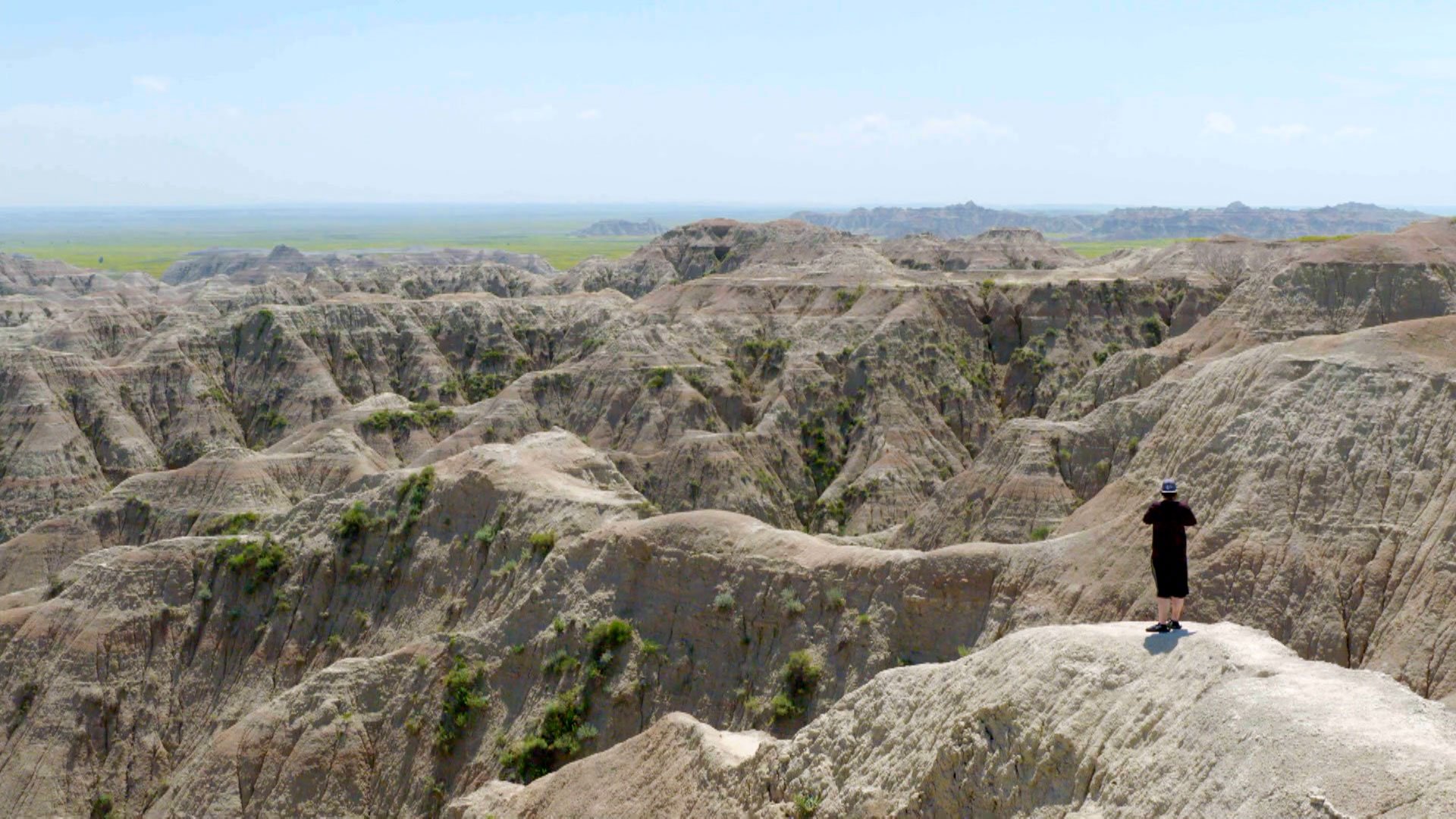
In the rugged, rocky landscape at Badlands National Park in South Dakota, there is a stunning diversity of fossils that represent the early mammals who walked the earth, some of them readily peering out from the ground. According to the National Park Service, the park has “the largest assemblage of known late Eocene and Oligocene mammal fossils.”
The mammals that lived in what is now the Badlands evolved from the small mammals that survived the K-Pg mass extinction event 66 million years ago. The Badlands weren’t so bad during the Eocene and Oligocene epochs, with the tropical forest of the Eocene giving way to the temperate floodplains of the Oligocene. Some of those mammals that called the area home are familiar to ones we know today, though most aren’t directly related. They also had some, um, quirks.
And now, meet just a few of the early mammals, with a special hat-tip to the weird ones.
Nimravids
Eocene to Oligocene epochs
Though they aren’t related to modern cats, nimravids were a family of mammals that looked fairly similar to Fluffy, though with a bit more bite. One genus, called Hoplophoneus, had retractable claws like the modern-day cat. Though if you happen upon a time machine and head back to the Oligocene, you may want to avoid saying, “Here, kitty, kitty!” since Hoplophoneus had some seriously dagger-like teeth.
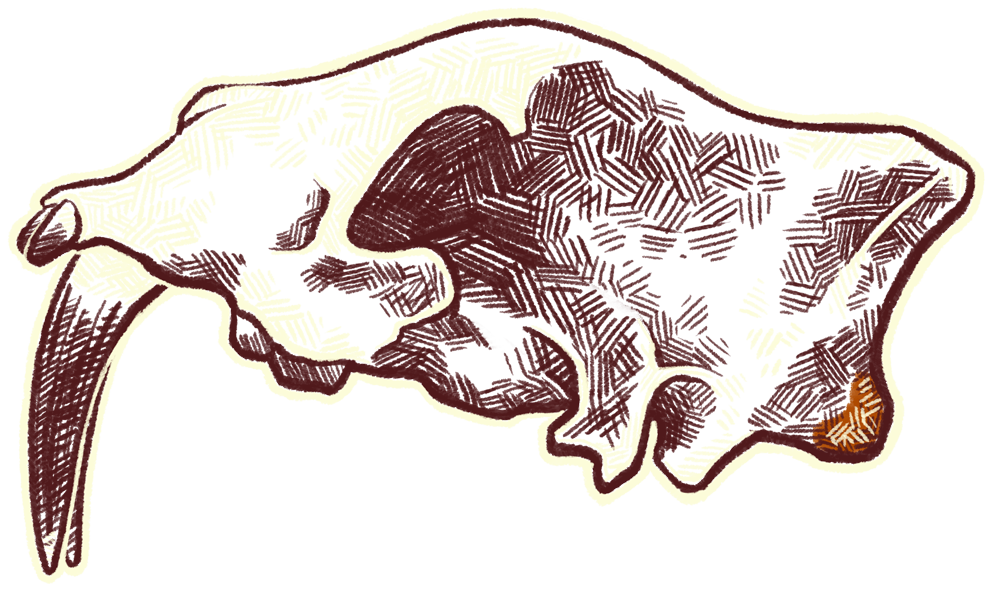
Oreodonts
Eocene to Miocene epochs
Oreodonts were a family of mammals that kinda/sorta looked like pig with a short face, and a stocky body on short legs with hooves. Early paleontologist Joseph Leidy once called them “ruminating hogs” – but not because they were particularly thoughtful. Ruminants are mammals that ferment their food in another type of stomach before digesting it. These guys usually ranged in size from a pig to a sheep. Some species had a nose similar to a modern-day tapir.

Canids
Eocene epoch
The first dog-like mammals emerged in the Eocene epoch. Canids are split into three subfamilies: Borophaginae, Caninae, and Hespoerocyonina. One genus of that last subfamily, Hesperocyon, lived during the Eocene epoch. It looked a lot different than Fido does today. Hesperocyon had a long body and tail, a small head, and short legs, and ate meat for dinner. The fossil record does not have any evidence on whether or not Hesperocyon was a good boy.
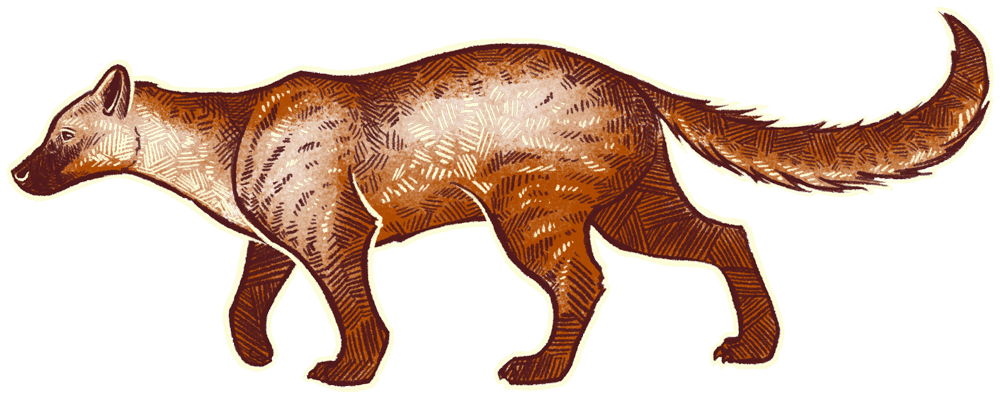
Protoceratids
Oligocene to Miocene epochs
The closest living example to a protoceratid today is the camel. But that comparison is based mostly on the skull, as these creatures lacked humps. One genus called Protoceras had four toes on their front legs, and just two bigger toes on the back legs. According to Badlands park ranger Ed Welsh, the male Protoceras had six horns on its head, along with a pair of fangs. That’s why Welsh gives it the nickname the “saber-toothed camel giraffe.”

Brontotheres
Eocene epoch
This family of mammals looked kind of like if you crossed an elephant with a really, really big rhinoceros. They typically had a large, rhino-like body, but their feet looked more like an elephant’s. Some of the species had large horns on their skulls. Though they likely started out roughly the size of dogs, these creatures evolved to become the largest land mammals during the Eocene. Their name, by the way, means “thunder beast.” Not cool enough? They’re also called titanotheres, which means “titanic beast.”
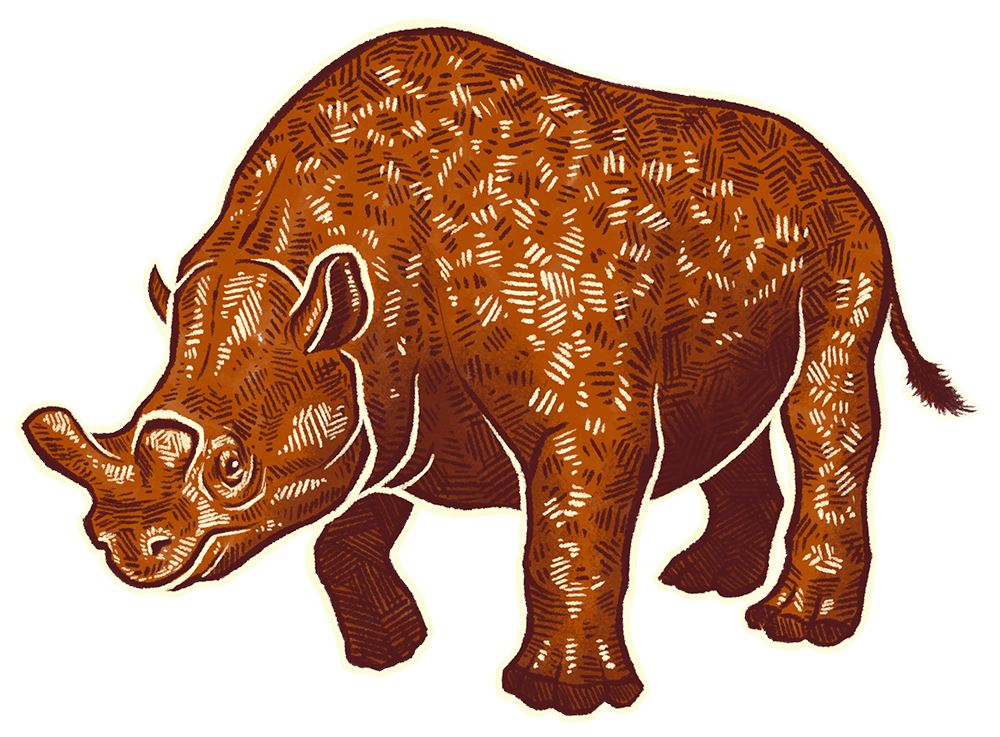
Entelodont
Eocene to Miocene epochs
Entelodonts were a family of pig-like mammals that, due to their bizarre, toothy skulls, earned the nickname “hell pigs,” “terminator pigs,” or “killer pigs,” though they aren’t really similar to modern-day pigs. Entelodonts had big tusks, and their heads were proportionately very large compared to their body. Fossil evidence shows that they may have used the tusks to fight with one another. Their teeth suggest that they may have eaten both plants and meat.
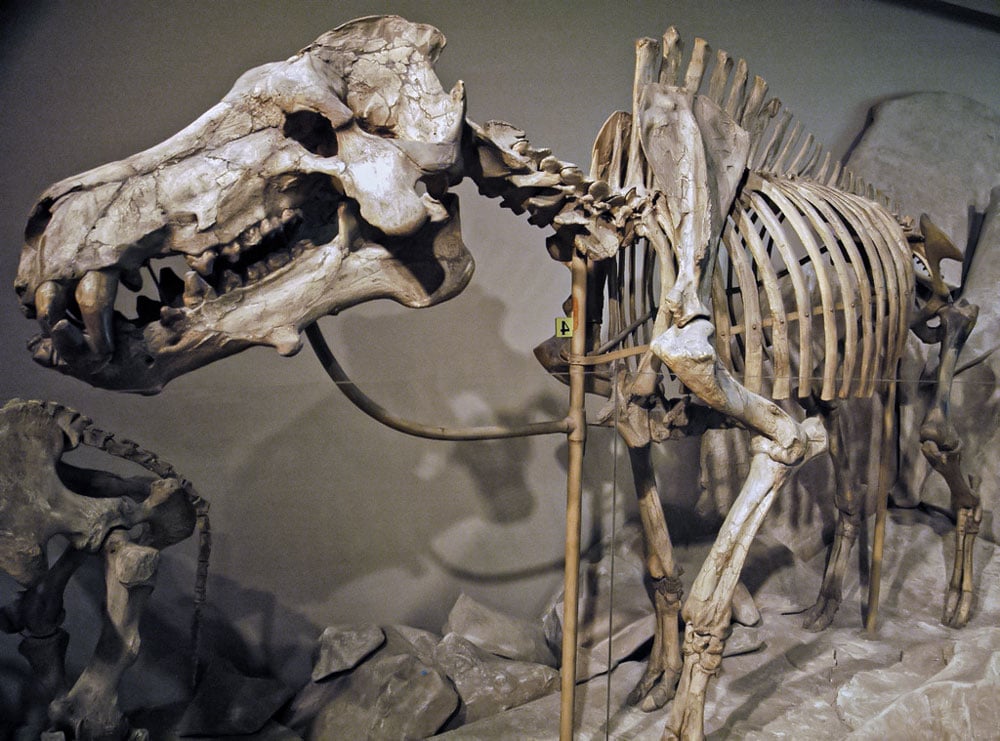
Equids
Eocene epoch
Say hello to Seabiscuit’s great, great grandma. Equids were early horse-like mammals, some of which started out as small, dog-sized creatures. Some of these creatures had three toes, like the mesohippus, a genus of equids. Horses began to diversify in the Late Oligocene, and some are related to the horses that still gallop the earth today.
